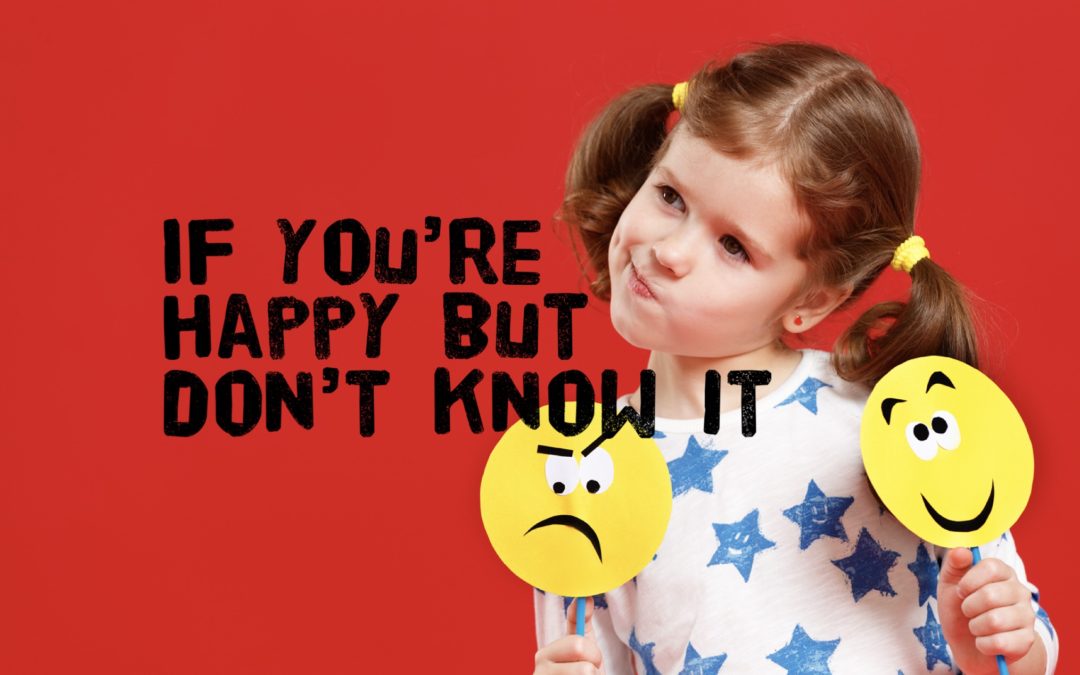Life wouldn’t be life without the wave of emotions we all feel. We need to experience the lows of sadness and anger in order to appreciate the highs of excitement and joy. But knowing our emotions isn’t something that inherently comes with the package. While we all have feelings from birth, we don’t know how to identify or label them unless we learn how.
But kids aren’t likely to sit still and listen to a powerpoint presentation on feelings. They need a format to learning that is adapted to their playful way of being in the world. So here are some creative ways to teach your child all about feelings.
Books
Books are an easy way to introduce feelings to your child because stories are filled with emotional characters– they might be happy, or sad, or frustrated, or curious. They might be lonely, or nervous, or full of excitement. So it’s fairly easy to pause the story, point to a character, and ask your child why he might be feeling.
In the beginning, you will probably need to offer suggestions, such as “I think he’s feeling sad because I see tears on his cheeks.” It helps to identify the facial expressions and body language that led you to your interpretation in order to help your child associate them with each other.

Over time you will be able to ask your child and allow them to answer independently. When they offer a plausible answer, acknowledge that, even if you would have chosen a different label. If the feeling your child says is very disconnected from the picture or the story, you can gently offer an alternative suggestion. Such as “hmmm…. I’m not sure, but I think he might be happy because I see a big smile on his face.”
If your child emphatically disagrees with your suggestion and insists on his interpretation, let it be. There are times to teach and times to just go with the flow. We certainly don’t want to shove feelings down our children’s throat.
Songs
Children love music, and so introducing the concept of emotions through song can be an easy way to capture their attention. Daniel Tiger’s Neighborhood has a variety of catchy little tunes about various emotions, many of which can be found on YouTube. One example is the When You Feel So Mad You Want to Roar Song, which not only introduces the feeling of mad but also helps teach a positive coping skill (i.e. counting to 4).
In addition to these pre-recorded songs, it’s equally effective to modify the lyrics of songs you already know. The easiest example I’ve found is to modify the song If You’re Happy and You Know it. You can see the way I’ve done so here, but you can adapt the feeling words and associated behaviors to suit your family.
Stuffed Animals
Kids learn best through play, so what better way to teach them about feelings than through some of their first “friends”– their stuffed animals. You can create any story plot and periodically stop to ask your child what they think different animals might be feeling. For example, if in your play the mama bear goes to work, you can stop and ask your child what the baby bear is probably feeling.
Just like with the books, in the beginning, you will probably start suggesting feelings for the animals based on the plot of the story. “I think Baby Bear is probably feeling sad to say goodbye, but she’s also very excited for the fun activities she’s going to do with her grandma bear.”

After your child hears these feeling words enough times, she will start to feel more confident in using them. Even if your child doesn’t use the words accurately, make sure your reaction is still encouraging. Most adults don’t appreciate it when we are trying out a new skill and someone laughs at us because we’re not doing it exactly right. So be careful not to do this with your child either!
TV shows
I know screen time is a very controversial thing, but most of us parents use screen time at least on occasion. So if you’re finding yourself having one of those moments, and you actually have an opportunity to sit down and watch with your child, it can be a great idea to ask about what different characters are feeling at different points in the show.
Maybe you pause the show and have a conversation about it, or maybe you just label the emotions when it seems appropriate. Just being exposed to the language of feelings is helpful, and being able to hear the labels in conjunction with a visual manifestation is a bonus.
Modeling
Our children learn so much about the world by watching us, so it’s important to remember that they are observing us in the midst of all of our feelings. Instead of having that be a negative thing, we can use it as a teaching moment by verbalizing our feelings as well as what we plan to do to help ourselves.
For example, if my child has just refused to follow instructions for the 1 millionth time that morning, I might say “I’m feeling really frustrated that you’re not doing what I ask today. I’m going to close my eyes and take a few deep breaths so I can calm myself down.”

At first, this might seem really awkward (or incredibly cheesy!), but there’s an added bonus to doing this. When we are in the midst of a difficult moment, verbalizing our feelings to our child can help us moderate our own emotions and prompt us to be more conscious of choosing adaptive strategies to cope. Win-win.
Peers
Children tend to notice the behavior of their peers, and let’s be honest, sometimes it’s hard not to. Because they are so new to the world of feelings, and don’t yet know what they are or how to deal with them, kids express their emotions in big ways. This can be challenging when it’s your child, but when it’s someone else’s, it can be a great source of learning!
One such opportunity can be when you’re in a group setting and you find your child staring at another child who is losing it in one way or another. This can be a great time to pull your child aside and comment on the emotions of the other child and why you think they may be feeling that way. For example, you might say “Oh wow, your friend Maria is crying. I think she may be sad that Jordan took her toy away.”
It can also be helpful to comment on peer behavior after you leave the interaction. You might say, “Hey, I noticed you shared your sand toys with Gloria. How do you think that made her feel?” If your child has some idea, let her share. And if your child is unsure, you can help her. “Did you notice the big smile on her face? I think she felt very happy!”
Learning to identify and label feelings is a huge part of emotional health and resilience (you can read more about that in If You Teach Your Kids One Thing, Teach Them This). But as with most things, it doesn’t matter how you teach this skill, it just matters that your child learns it. So take these ideas as inspiration, but go ahead and get creative!
____
Dana Basu, PsyD is a licensed clinical psychologist at EverGROW therapy and founder of Everything But Crazy, an online resource for parents. She provides individual therapy, support groups, and online resources for parents in Orange County and throughout the state of California via online therapy. She specializes in working with the highly sensitive person and people with difficult childhood experiences, trauma, parenting stress, and chronic guilt.

